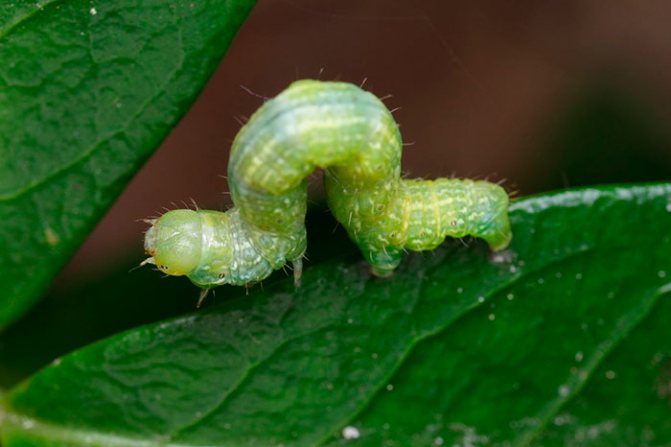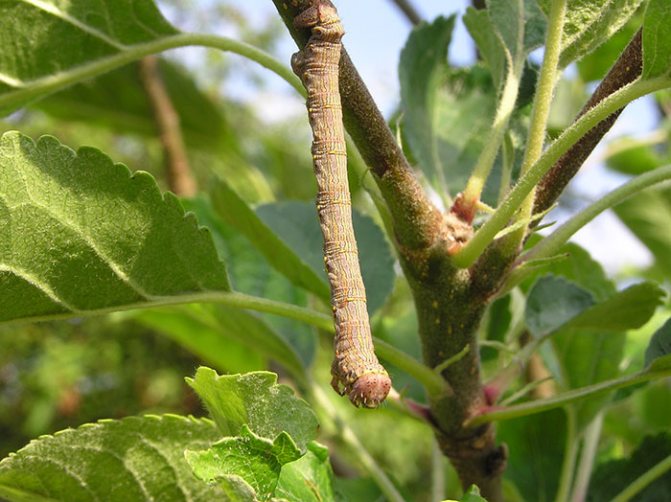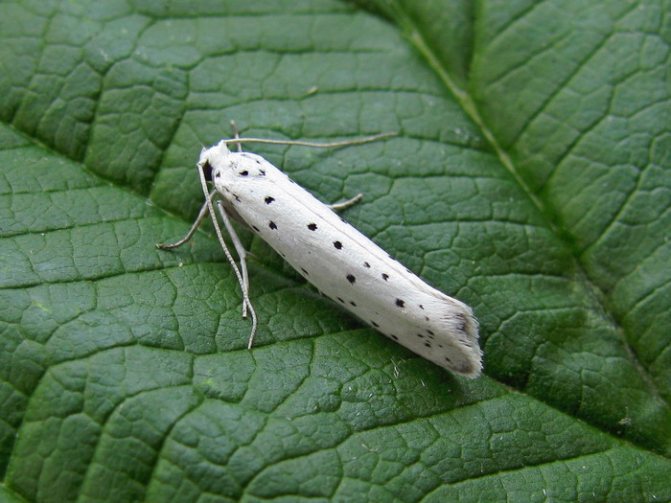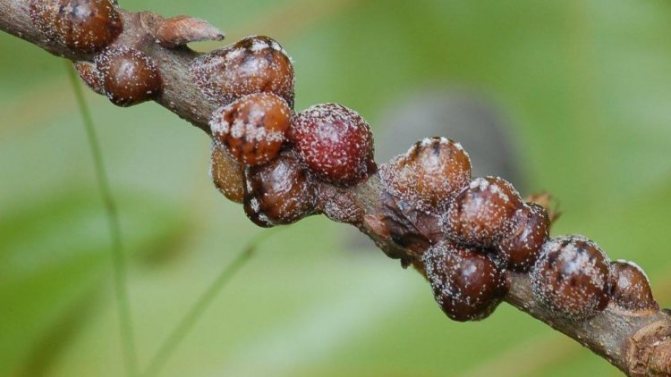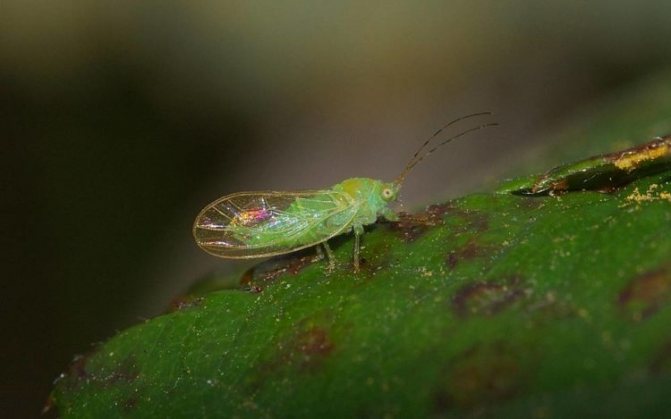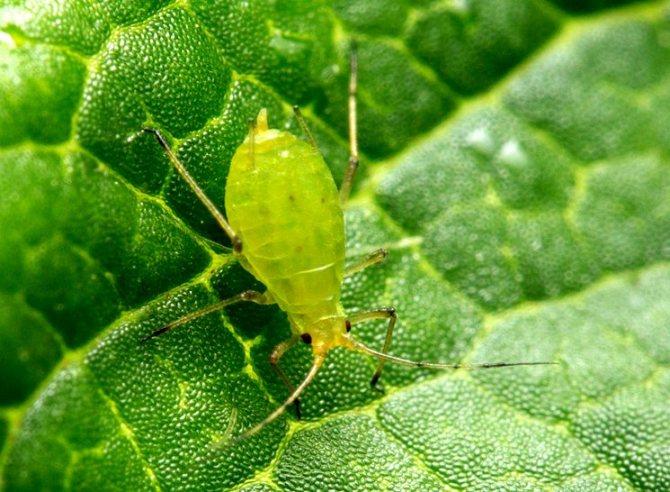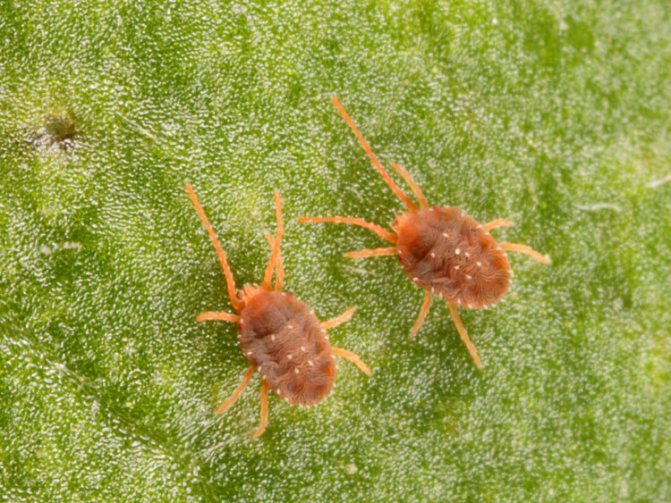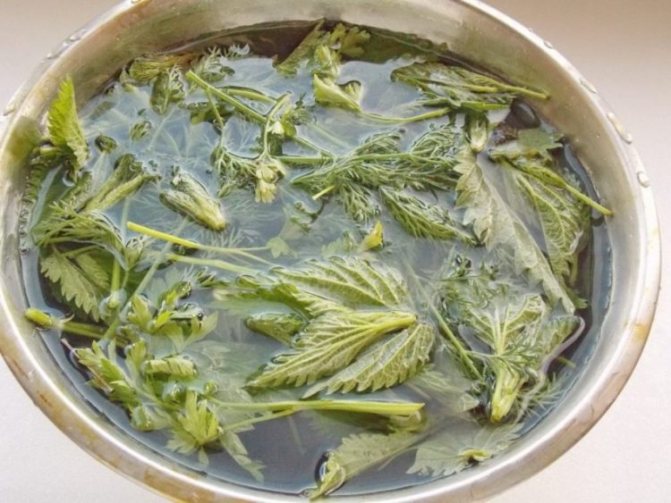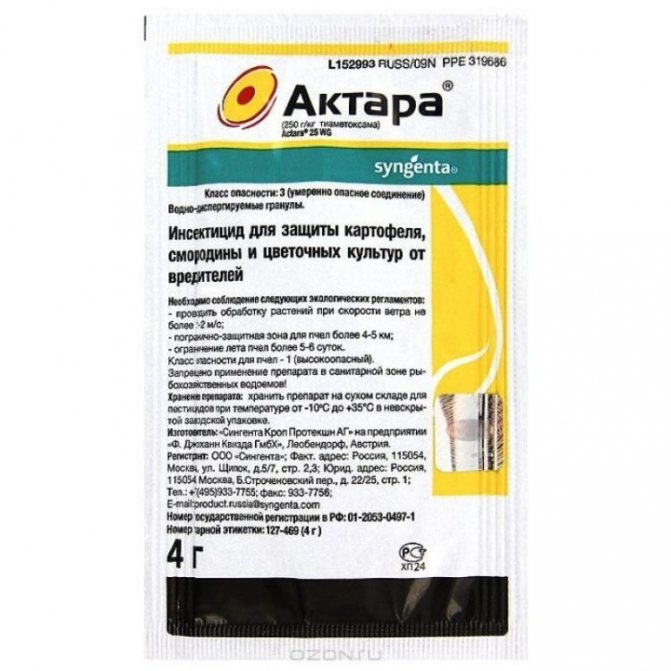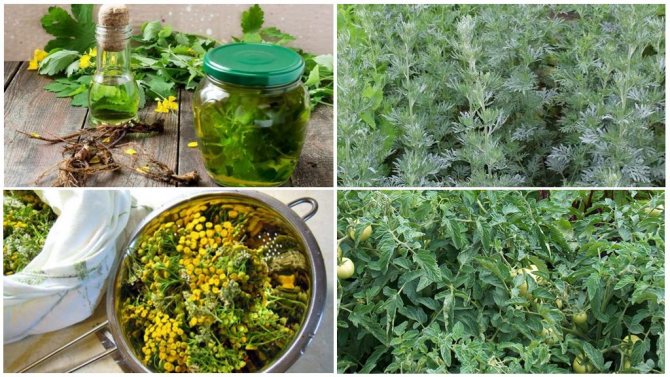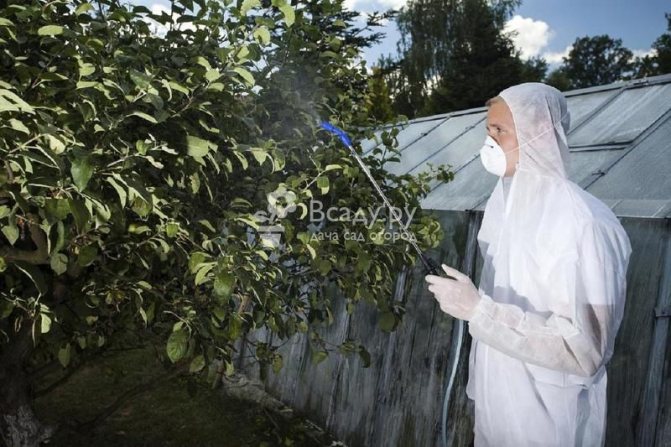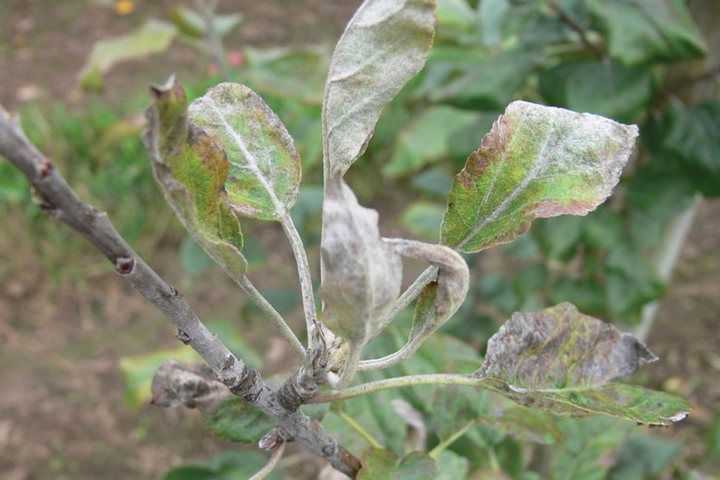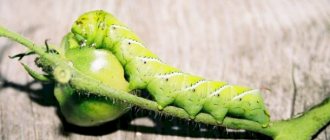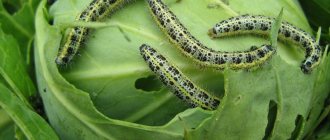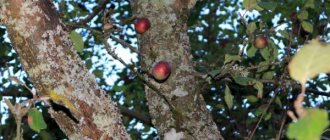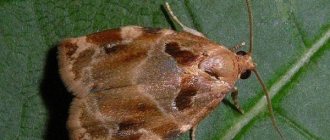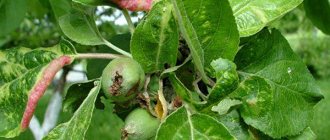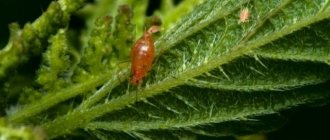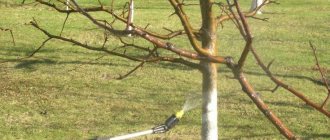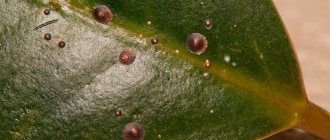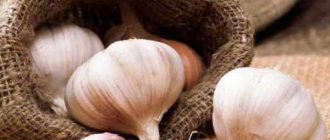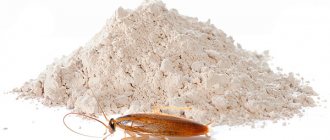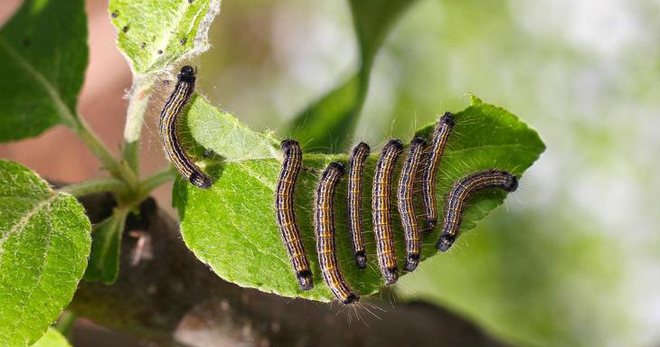
In order to harvest a good apple harvest, it is important to take proper care of the trees. Small pests that destroy young buds, flowers, leaves and fruits can spoil plans. To save the harvest in the event that caterpillars have appeared on an apple tree - how to deal with them with the help of chemistry and folk remedies.
Types of caterpillars
They are voracious and adaptable. Let's consider their types in more detail.
Black
Several species of such caterpillars attack apple trees at once: the gypsy moth is the most easily recognizable. Large, furry, almost 7 centimeters.
Gray
A typical representative is a ringed silkworm with blue stripes. During the day he sleeps inside the web, at night he is active.
Green
Winter moth, reaching 3 centimeters in length. She only has 5 pairs of legs, therefore, when moving, she arches in an arc. The leaf roll is a small 2 cm caterpillar. You can identify it by the cobweb.
White
On the apple tree, you can find parasitic species of white and pale pink, as it were, translucent caterpillars. These are not only the usual glass moth and moth, but also those that will spread to the apple tree not so long ago, such as arboreal, eastern tree moth, fruit-striped moth.
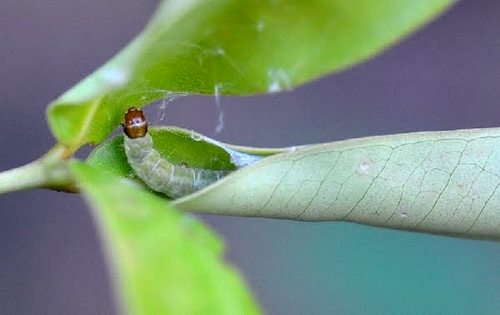

Moth caterpillar
It is ubiquitous and very dangerous. She can spend the whole winter under the bark. After the apple tree blooms, she lays her eggs on the ovary and leaves. And then it is very important to know how to process them, otherwise you can forget about the harvest.
Apple Glass Caterpillar
White-yellow in color, no more than 2.5 centimeters in length, only harms apple trees.
Yellow
Hawthorn is not the smallest caterpillar. You will recognize them by the black longitudinal stripes. Up to 4.5 centimeters long. They leave noticeable traces - veins remain on the nibbled leaves. Apple moth - its small caterpillars 1.3-1.6 centimeters are painted in a dirty yellow color. Black dots along the body, in parallel pairs. Only apple trees are affected.
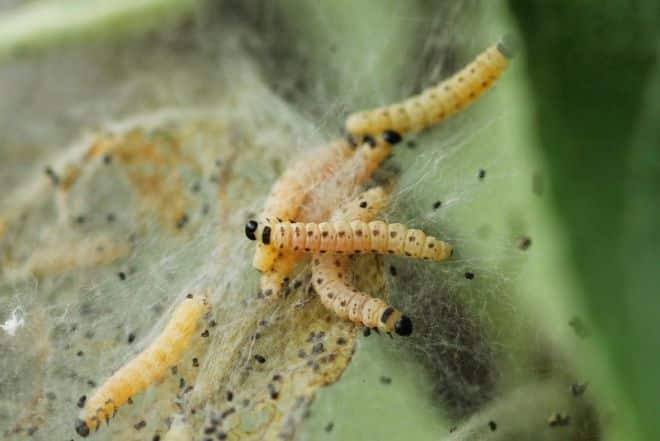

Signs of tree infection
There are a number of symptoms that can help identify caterpillars on an apple tree.
Web
A key symptom of culture damage is the presence of a cobweb with larvae. The common types of parasites that lead to the appearance of cobwebs include hawthorn, silkworm. The moth or ermine moth can also cause problems.


Larvae under the bark
The defeat of the trunk and branches under the bark by caterpillars is asymptomatic for a long time. During this time, the parasites gnaw many passages in the trunk. As a result, the threat of damage to the culture by bacterial microorganisms and fungi increases. Such a tree dries up quickly and dies.
Deformation and the appearance of holes on the buds
Caterpillars often cause damage to the buds and flowers. As a result, the yield of the tree is significantly reduced. Flowers that have been hit by caterpillars fall off. As a result, ovaries do not appear on such a tree. If the fruits are still formed, they also suffer from caterpillars.
The hawthorn and moth lead to the appearance of holes on the buds and in the buds. Also, the leaf roll is often the cause of such problems.
We fight the apple moth
Quite effective in the fight against this parasite:
- timely scrupulous collection of fallen fruits - they are destroyed;
- systematic cleaning of the bark, applying trapping belts to the tree trunk is the best tool;
- the use of insecticidal active agents for spraying when the apple trees have faded: 0.2% Chlorophos solution or 0.3% Karbofos.
See also
Description of the columnar apple variety Yesenia, advantages and disadvantages, how to harvest and store the cropRead
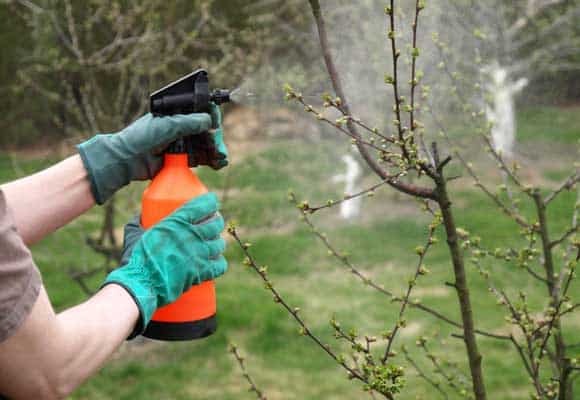

Prophylaxis
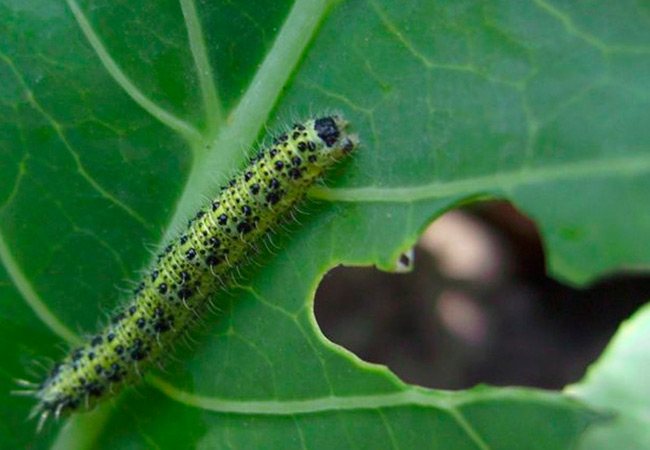

- Inspect apple trees regularly for harmful insects and their larvae.
- In the spring, destroy all egg-laying and spider nests found on the tree, and whitewash the trunks with lime mortar
- All season, pluck and burn all leaves rolled into a tube.
- Spray the soil under the apple trees periodically with endobacterin.
- Do not be lazy to spray apple trees with folk remedies against caterpillars.
- Hang some caterpillar feeders in your garden.
If you follow the entire complex of the above measures, then the caterpillars will not appear on your apple trees, which means that you will definitely harvest a good harvest of delicious apples.
Versatile Track Control Techniques
A combination of local preventive and exterminatory measures is guaranteed to be able to destroy parasites and keep the long-awaited harvest whole.
You can collect caterpillars by hand or involve their natural enemies in the case: birds, spiders, ticks.
Chemicals
Chemicals are most effective against voracious larvae. And the selection of them on sale is quite large.
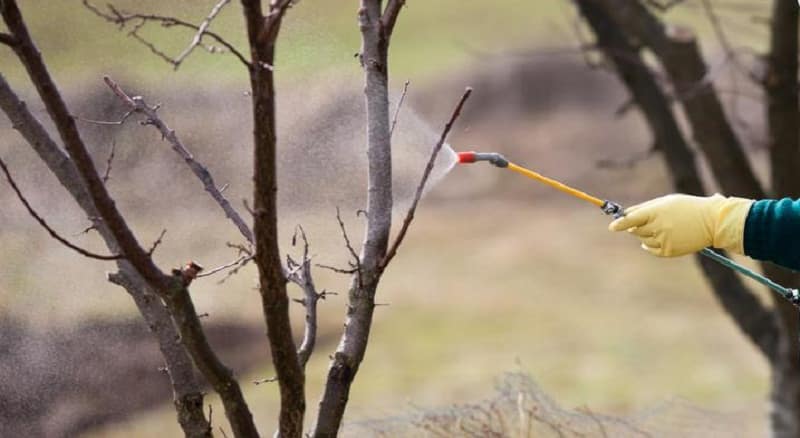

Intavir
It has a negative effect on the entire nervous system of parasitic leaf rollers, moths. Tablets or powder dissolve in water: 10 liters per tree, only 2-3 treatments.
Tanrek
After spraying, it poison the caterpillars for 3 weeks, but during the period of bright flowering and active fruiting of the apple tree, it cannot be used. A full bucket of water will require 3 milliliters of the substance.
Fufanon
Poisons insects quickly. Valid for 10 days. It is used only during the growing season, no later than 3 weeks before harvest. Two treatments are enough.
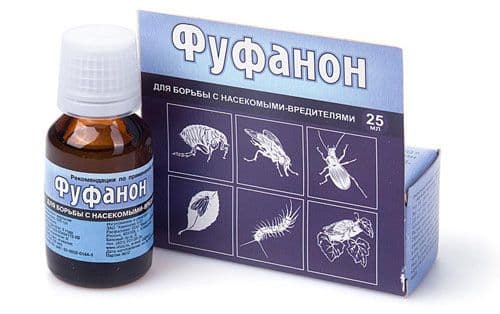

Karbofos
With direct contact of the agent with an insect, the pest dies almost instantly. Valid for 10 days.
Biologicals
Fitoverm is an example. Helps get rid of caterpillars after flowering. Serves as a good substitute for chemistry during the ripening period. One ampoule is diluted in 2.5 liters of water.
Folk recipes
Caterpillars, just like now, devoured leaves a hundred years ago. Passed from generation to generation, recipes have come down to us for means that allow us to fight them. The ingredients are only natural. And the use of improvised substances eliminates unnecessary costs.
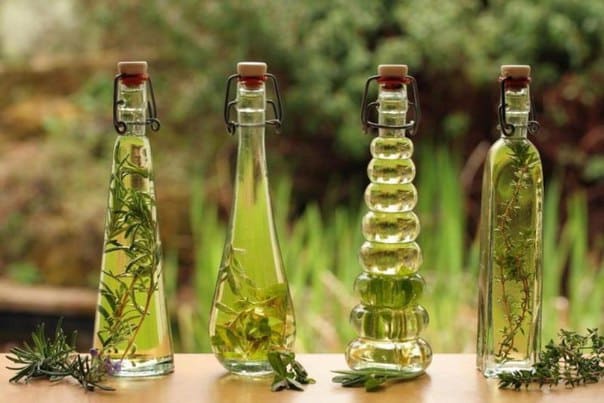

Take water, for example. A strong jet can wash away silkworms and moths. All that remains is to collect them and burn them. Herbal decoctions and infusions can be an excellent help in the fight against apple pests.
Celandine
Infusion - a glass of celandine is soaked in a bucket of water for a couple of days, filtered, and then soap is added to it (2 tablespoons). Broth - 200 grams of dry celandine leaves in 1 liter of well water are boiled for 15 minutes, preferably in a water bath. Then the solution is filtered and mixed with a bucket of water.
Celandine belt - in spring, fresh green leaves of the plant are tied around the apple tree trunk. In the fall, the bandage is changed.
Tomato tops
Broth: 1 kilogram of tops is infused for 4-5 hours in a bucket of clean water. Then more water is added to it in a ratio of 1: 2.8.
See also
Description and characteristics of Red Chief apples, cultivation and careRead
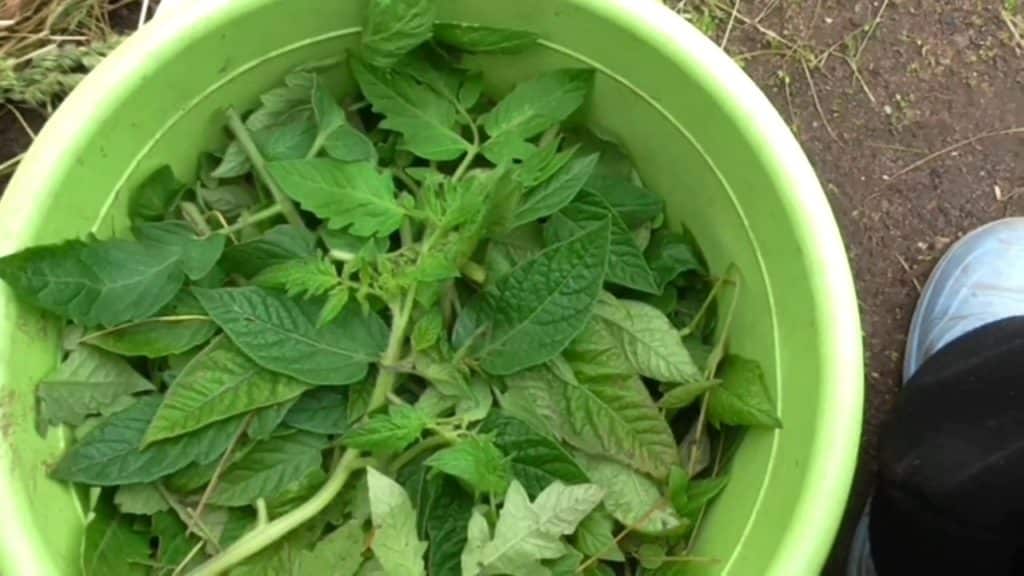

Birch tar with soap
Dissolve 10 grams of tar and laundry soap (1/2 piece) in a bucket of water.
Soda
It can be used in two ways:
- 3 tablespoons (with a slide) spoons per bucket of water - for a complete spraying.
- Mixed with ordinary flour or ash - for dusting.
Sagebrush
For infusion, blooming wormwood is taken. The floor of the bucket of the plant is filled with 10 liters of water. After a day, boil for half an hour, and then dilute with an equal part of water.
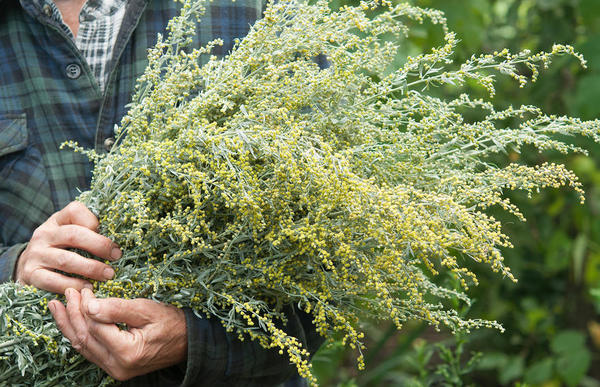

Description of the pest and habitat
Caterpillars are permanent inhabitants of wildlife. They represent the larva of a moth, moth or butterfly, and belong to the order - Lepidoptera. Caterpillars parasitize trees and shrubs, flowers and grasses.
In addition, their populations are capable of migrating long distances.
A distinctive feature of all types of caterpillars is their rare gluttony... Having settled on an apple tree, these pests can almost completely destroy the leaves, do not disdain flowers and fruits, and some species - even the bark of a tree.
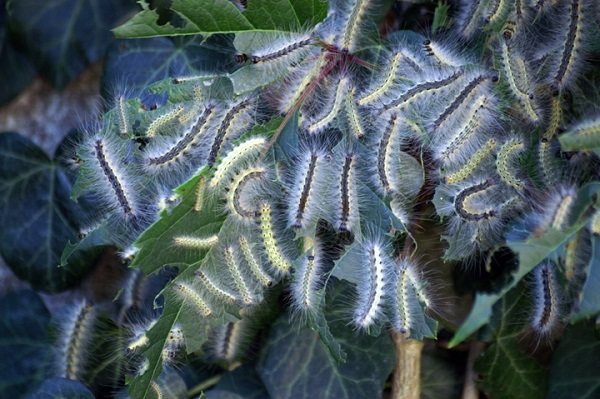

Caterpillars on the leaves of an apple tree.
It is interesting! There are several thousand different types of caterpillars. Depending on the species, the caterpillar can lead an open and hidden lifestyle. Therefore, it is so important to know the signs that will determine the defeat of the apple tree by these pests.
Web
One of the signs that caterpillars have settled on the apple tree is web. In the warm season, it can often be found in fruit orchards. The degree of damage can be different. From small inconspicuous spider webs to neglected cases - huge spider webs and completely eaten foliage.
The presence of a cobweb on an apple tree may indicate the presence of different types of caterpillars. They can be very different from each other in color, size and way of life, be visible or hidden from human eyes.
One thing is invariable - they all cause great harm to both the tree as a whole and the future harvest.
If caterpillars are found in a web on an apple tree - how to fight? The first thing to do is determine what kind of pest settled on an apple tree... The main types of caterpillars on an apple tree in a web include:
- Apple ermine moth;
- Winter moth;
- Ringed silkworm;
- Hawthorn;
- Unpaired silkworm;
- Goldtail.
Larvae under the bark
There is a category of pests that most dangerous for an apple orchard. They are pests living under the bark trees. They lead a secretive lifestyle and can remain invisible for a long time. Without spending time on a thorough examination of the apple tree, it is difficult to understand why the health of an apple tree, which looks healthy, deteriorates or the tree suddenly dies.
Caterpillar larvae build tunnels and cavities under the bark of the apple tree, damaging wood... This negatively affects the conductive functions of the trunk, increases the risk of fungal and bacterial infections, and stimulates the formation of hollows.
TIP! To detect such pests, it is necessary to regularly check the condition of the bark. Look for small holes in the wood. The entrance to this hole is usually marked with pest debris.
The most common caterpillars that live under the bark of an apple tree include:
- Apple glass bowl;
- Smelly woodworm;
- Eastern moth;
- Woody wood is corrosive.
In apple buds
Caterpillars in apple buds give the summer resident an advantage over the previous group of insects. They are well visible, which means you can quickly respond to their appearance.
Damaging wood and leaf mass of a tree, the influence of caterpillars on the yield is indirect. Those who prefer to destroy buds and flowers - have a direct impact on the quantity and quality of the crop.
Devouring flower buds, caterpillars prevent flowering... Those flowers that managed to grow and were damaged by insects, the apple tree throws off, not having time to form ovaries. And if fruits could grow from the ovary, the caterpillar does not hesitate to feast on them. If left to chance, a negligent gardener can generally be left without a crop due to the invasion of caterpillars.
The brightest representatives of flower and bud lovers are leafworm, hawthorn and apple moth.
Whatever caterpillar settles in your orchard, you have to fight with her... The main thing is to find the right remedy.
Terms of preventive treatments
Prevention measures are organized in the spring. The gardener needs to thoroughly spray and inspect the bark, get rid of nests covered with cobwebs and damaged leaves. You will need to bleach the trunks and process the tree and soil around it with a biological product. And it is recommended to involve natural helpers. Bird feeders will do a great job of this. So you can provide protection for apple trees and future yields.
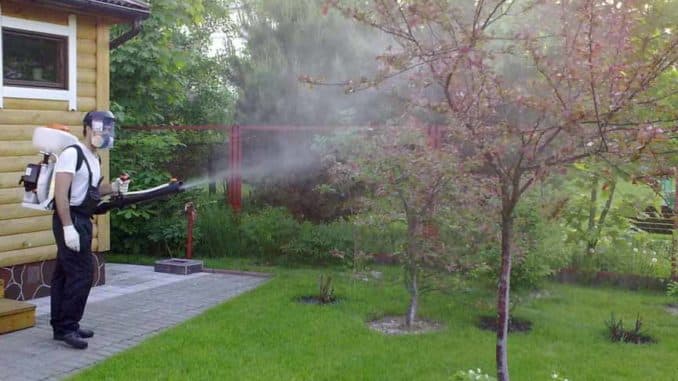

Before the start of sap flow
The buds have not yet woken up at the apple trees, but the time has come for spring work: examining the trees after the winter days, destroying all traces of the caterpillars.
From the beginning to the end of flowering
From the moment the buds hatch, and until the very appearance of flowers, it is time to spray the apple trees with copper sulfate and insecticides. Otherwise, the caterpillars will damage the flowers and ovaries. When flowering begins, spraying is already stopped. Only manual collection and incineration of caterpillars is available. You can spray trees with Bordeaux mixture if no spraying has been done before.
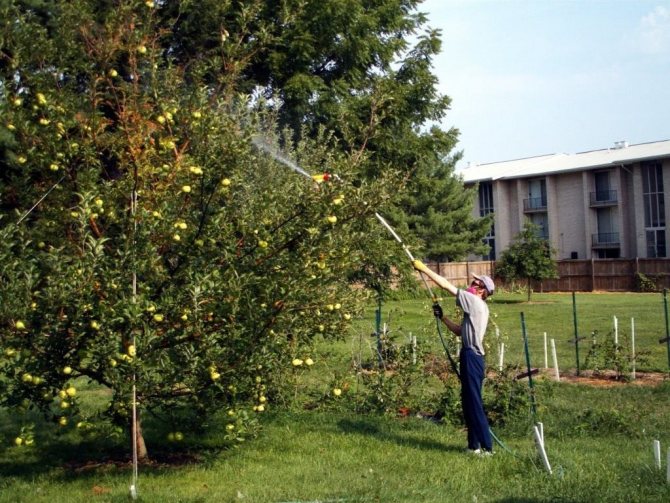

After flowering
As soon as flowering is over, the next processing of apple trees from the moth is performed. Both folk remedies and insecticides are used. From this moment, at least a month should remain until the apples ripen.
When apples ripen
Chemicals are no longer used. Manual harvesting is used to destroy the tracks.
After fruiting
It's time to prepare apple trees for winter: collect and burn fallen leaves, dig up the ground, and then treat with insecticides. It will require sanitary pruning of apple trees, and, if necessary, treatment of wounds. The trunks of trees are whitened for the winter.
Caterpillars, even the smallest ones, can do great harm to trees. If you leave everything as it is, the apple tree will wither, the yield will eventually dwindle. If you know about the ways of dealing with apple pests, you can prevent their appearance. And then the apple orchard will delight its owners with fabulous harvests every year.
General protective measures
Pest chemicals are applied before or after flowering. After 15 days, it is recommended to spray them again. Complex products, such as Fitoferm, prevent moniliosis disease and inhibit harmful insects.
Iron vitriol is used to prevent scab. It is applied before the buds bloom on the tree. It is forbidden to spray this product after budding, as it causes burns on the leaves. To protect apple trees from pests (mites and leaf rollers), Karbofos is used.
A threat to the life of a tree is carried by tinder fungi, which often appear in the trunk.
If fungi form at the bottom of the trunk, the tree will die. In this case, it is chopped and burned far from the beds. Polypores that appear on branches are less dangerous. They are cut off, and the apple tree is treated with iron vitriol.
For the prevention of tinder fungi, a solution of ferrous sulfate 5% is used. You should fight ants, because they feed on the kidneys and provoke the appearance of aphids. To prevent insects from crawling along the trunk so often, it is necessary to grease it with tar.
Before you deal with pests of the apple tree, you need to clear the area of dry branches and weeds. Chemicals should only be used in accordance with the instructions.
Hello dear friends!
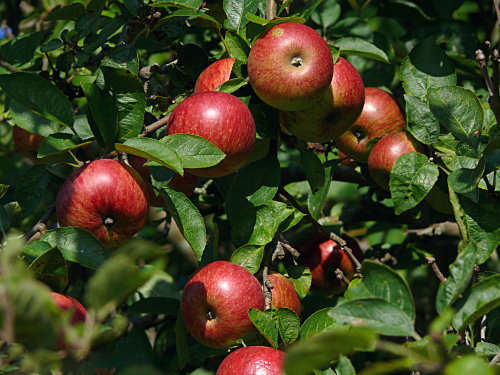

Let's continue our conversation about our wonderful apple trees. In the previous article, we talked about the main diseases that lie in wait for apple trees throughout their life.
But the matter is not limited to diseases alone, hordes of active and gluttonous pests are waiting in the wings to make themselves a feast on our beloved trees.
Therefore, with you, dear gardeners, the main task is to notice and neutralize them in time.
How to fight them? The most dangerous apple tree pests and the fight against them - we will talk about this.
Chapter 2. How to process
Prevention is known to be a guarantee of health. This wording is also relevant for the garden and vegetable garden. As safe as modern insecticides are, you want to keep them to a minimum to get a truly organic crop. And for this you need to regularly "go around with a watch" your possessions, checking the plants for the presence of clutches of caterpillars. Leaves entangled in cobwebs must be removed and destroyed immediately.
One of the prevention methods is whitewashing trees, which protects plants not only from insects, but also from sunburn. Digging in a garden plot is also quite effective. Small grooves around the perimeter prevent many tracks from reaching the garden and vegetable garden. The grooves need to be cleaned periodically.
Caterpillar insecticides Insecticides are contact (they protect only the treated parts of plants, act quickly, but, as a rule, they are also promptly washed off by rain), intestinal (enter the insect's body with food and thus destroy the pest), systemic (affect insects in various ways).
The following drugs can be used to combat caterpillars:
Bitoxibacillin - a biological product based on bacteria. Effective against caterpillars of vegetable, fruit, flower and ornamental crops. In summer, with a high density of pests, to achieve the desired result, treatment should be frequent and regular (with an interval of 7-8 days).
Lepidocide - another biological product designed to combat caterpillars in the garden, vegetable garden and flower garden. In the season of heavy rains, regular processing is required (every 7-8 days).
Monsoon - a drug with a wide range of effects. Resistant to temperature fluctuations. The effect of application lasts about 15-30 days.
Iskra M - can not be used near water sources. Acts promptly, effective within two weeks.
Inta-Vir - a broad-spectrum drug. Dangerous for beneficial insects (therefore, plants should not be sprayed during the flowering period) and aquatic inhabitants.
Senpai - affects insects by contact. Works for 2 weeks. Dangerous for bees.
All insecticides must be used with extreme caution, in no case exceeding dosages.
Ants on apple tree
Ants in the garden play more a negative role than a positive one. After all, they massively cultivate aphid colonies, which feed on cell sap and spread dangerous viral diseases. In addition, with a significant number of ants, they are capable of damaging young shoots of apple trees.
There are several species of ants that have a body length of 4 to 10 mm. The body is painted in various colors from black to red.
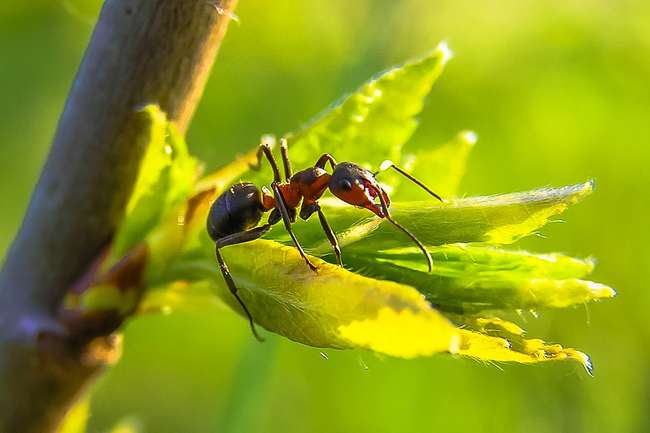

The mass appearance of ants coincides with the period from budding to the onset of the budding phase.
For the complete destruction of these pests, it is necessary to carry out several spraying during the season:
- In the spring, before bud break, they are treated with a mixture of Bordeaux liquid (3-4%) and ferrous sulfate.
- In the budding phase, the tree should be sprayed with a 2% solution of Bordeaux liquid. At the same time, it is necessary to treat the crown with insecticides Decis, Karbofos, Topaz and Skor.
Bacterial diseases
Affected apple trees do not respond well to treatment. Most often, the infection gets with seedlings, after planting it is quickly spread by insects and birds. There are such diseases. Prevention of all bacterial diseases - insect control, careful selection of seedlings.
Bacteriosis (Bacterial Burn)
Bacteria enter the vascular system of the apple tree through damage to the bark. It often accompanies moniliosis. Insects are carriers. Signs of bacteriosis:
- Red spots between veins.
- The ends of young shoots dry out.
- The bark becomes sticky.
- Damaged leaves, buds and fruits do not fall off.
You need to treat with antibiotics and drugs with sulfur. Remove damaged parts.
Bacterial root cancer
Infection occurs through the particles of affected roots and branches remaining in the soil. As a rule, the disease occurs when apple trees are grown in one place for a long time. Symptoms are soft growths on the roots. They gradually harden. It is not treated. The affected tree is uprooted and destroyed.
Bacterial necrosis
Infection occurs through the damaged bark. All parts of the apple tree are affected. The edges of the sheet die off, it folds itself. Spots form on shoots and fruits.
Treatment:
- Cut off all damaged parts.
- Disinfect the cut sites with copper sulfate.
- Cover the sections with paint or putty.
- Treat stains with zinc chloride solution.


Scallet apple comma-shaped
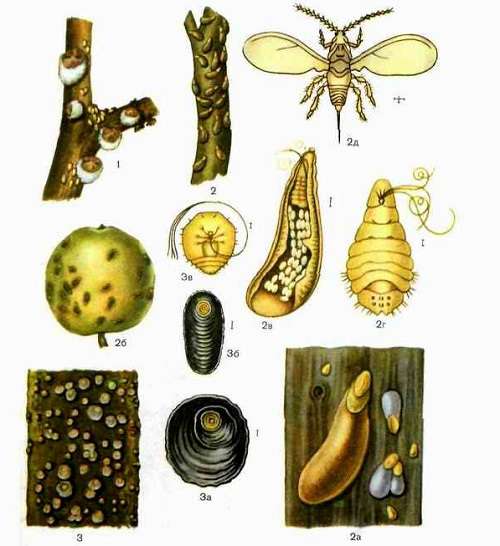

The apple comma-shaped scutellum: 2 - an accumulation of scutes on a branch, 2a - shields on the bark (large shield - females, small shields - males), 2b - an apple damaged by a shield, 2c - a shield removed from the bark, under which a shriveled female is visible and already laid eggs, 2d - female, 2d - male. Pseudo-Californian scutellum: 3 - accumulation of scale insects on the bark, 3a - female scutellum, 3b - male scutellum, 3c - female.
Shields are small, up to 4 mm long, insects in the form of an oblong, slightly curved comma, covered with a hard skin.
Males have wings and a process at the tip of the abdomen. The eggs hibernate under the shields of the dead female and are activated in the spring.
The larvae are oval, pale yellow. They instantly creep along the tree, and can be carried by the wind to neighboring apple trees.
- Apple tree pests pierce the bark with sharp bristles and begin to actively suck out the tree sap. After 2 days, the larva becomes covered with a waxy coating - the time for maturation comes.
In mid-June, the larvae completely turn into adult insects. In August, females lay up to 100 eggs and die. In the spring the cycle repeats itself.
Scabbards lead to the death of the bark of the apple tree, the fall of leaves and the death of thin branches. Fruits also suffer, reddish spots appear on their surface, and their presentation decreases.
♦ What to do. It is quite difficult to deal with scabbards. Adults simply have to be scraped off the surface of the tree by hand with metal brushes.
With their strong colonization, damaged shoots have to be completely cut out and burned.
Helps to destroy the colonies of larvae by spraying the tree with a mixture of laundry soap (200 g), soda ash (20 g) per 10 liters of water.
Well, now we know almost all diseases and all pests of apple trees "in person", we will be able to meet them with dignity and protect our garden, preserving the harvest.
On this, perhaps, I will end a series of articles on growing apple trees, since we highlighted the main stages of their life: choosing seedlings, planting them, caring for young and already mature trees, possible diseases and pests.
We wish you a healthy garden, dear friends, and see you soon!
Viral diseases
The peculiarity of these diseases is that viruses do not live in an open environment. You can infect an apple tree only with untreated tools.
Prevention includes careful selection of seedlings, quarantine, treatment with insect repellents. Even an inexperienced gardener can recognize these diseases using the description below.
| Disease | Symptoms | Treatment |
| Polyiferation (overgrowth, paniculation) | Excessive growth of shoots ("witch brooms"). The leaves on them are small and deformed. | Affected apple trees do not respond to treatment. To avoid further spread, they must be uprooted and burned. |
| Mosaic | Stripes and spots on the leaves, early abscission. The disease is typical for young apple trees. | |
| Small-leaved (rosette) | Coarseness of leaves, they often wrap up, become small. The apple tree does not bloom. | |
| Star cracking | On young fruits, spots are formed, in the center of which are star-shaped cracks. |



